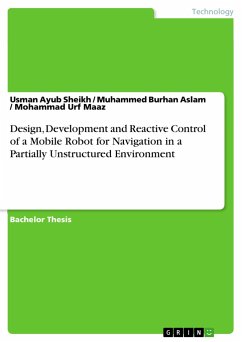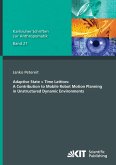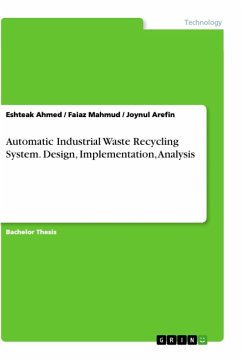Bachelor Thesis from the year 2013 in the subject Electrotechnology, grade: Excellent, , course: BS Electrical Engineering, language: English, abstract: Mobile robots have emerged in the recent years as solutions to many real-life situations which occur in an unknown environment. In such cases, the mobile robot must be able to navigate through the unstructured workspace. The purpose of this project is to study and implement stimulus and response based control for real-time navigation of a mobile robot. A fuzzy logic control algorithm has been taken as a proposed behavioural control scheme and successful simulations on MobotSim® are presented before the design of the robot. The design is a compact differentially driven circular mobile robot which fits a 25 x 25 x 30 cm3 box. Moreover, a detachable ball-potting mechanism has also been designed, fabricated, and placed on the robot. The robot was designed in Autodesk Inventor® and the fabrication procedures including casting and machining were used to fabricate different parts. Embedded control system is designed and implemented using PIC18F4520 as master, multiple PIC18F2431 based motor control cards as slaves. IR range sensors have been used to take measurements from the environment. Simulations for PIC micro-controllers have been performed on Proteus® and implemented on hardware. Finally, successful experiments were conducted to verify basic navigation. The platform can further be used to study and implement other control techniques for future research.
Bitte wählen Sie Ihr Anliegen aus.
Rechnungen
Retourenschein anfordern
Bestellstatus
Storno








